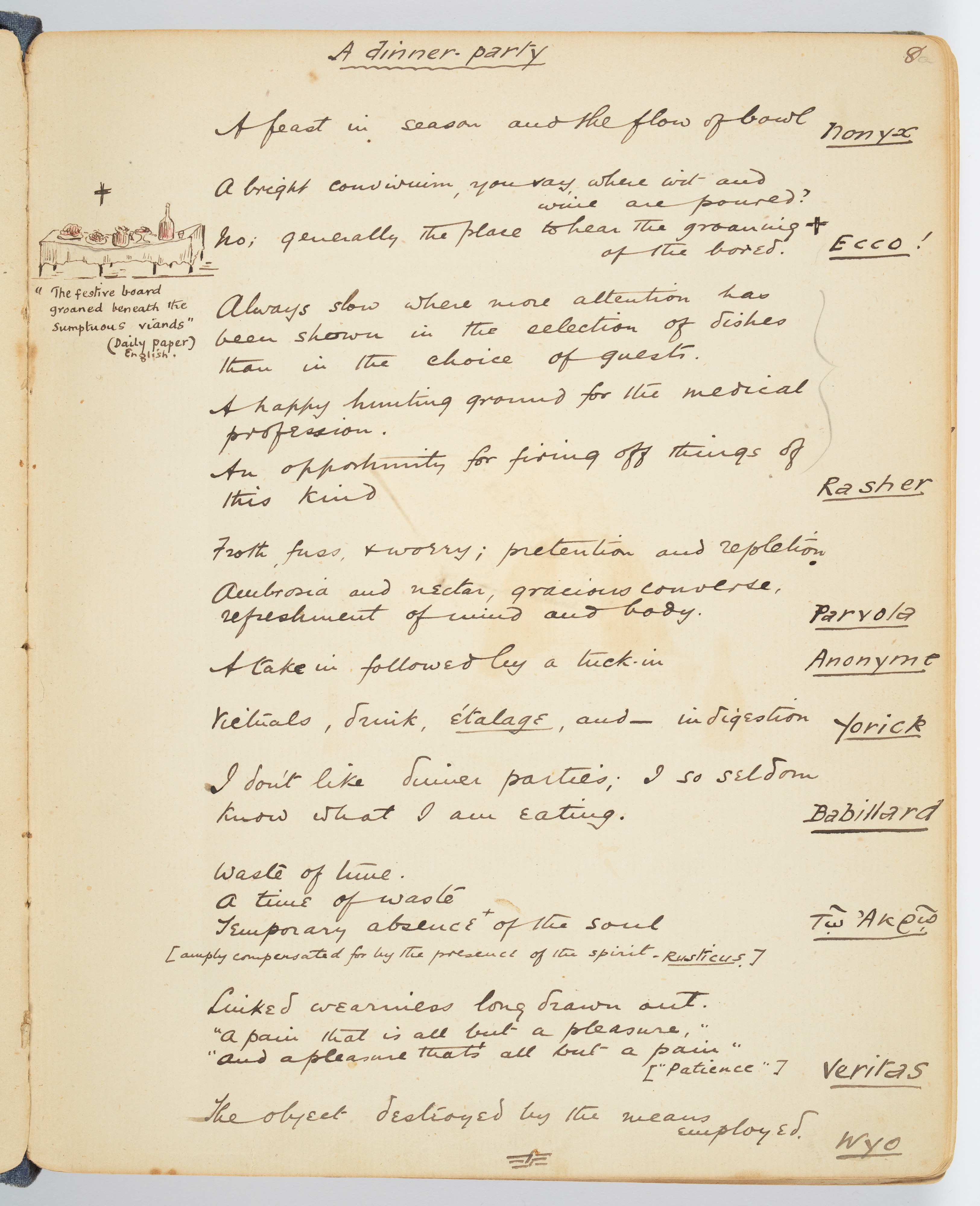Journal of the Apophthegm Society
The journal of an obscure society devoted to pithy sayings takes a roundabout route to the Library.
A recent acquisition by the Library had many of us scrambling to look up the obscure term ‘apophthegm’. It means ‘A terse, pointed saying, embodying an important truth in few words; a pithy or sententious maxim’. According to the Oxford English Dictionary, the word had its peak around 1781.
Late last year, we received in the mail from Perth a fragile but well-maintained, hand-written volume, curiously titled the ‘Journal of the Apophthegm Society’. It was created in 1893. How this mysterious item made its way to the Library is almost as curious as its title. A small note inserted into the frontispiece gives some sense of its circuitous voyage:
This book was found in a Red Cross waste products shop during the second World War. Inside the cover it bore the following inscription:
Fred. R. Barlee
Wentworth Court, Sydney, N.S.W. July 1893.
This wasn’t the first we’d heard about it. In 1974, a CE Cowan of Hollywood (now Nedlands), Western Australia, contacted the Library about the item, offering us the opportunity to take photocopies, and then return it — then-Mitchell Librarian Suzanne Mourot saw promptly to the task. Some 47 years later, the Cowan family decided it was time to give the item a permanent home in the Library.
The early pages of the beautifully illustrated journal give us the details of the establishment and rules of the ‘Society’ which met monthly to brainstorm pithy ‘apophthegms’ on a series of six set topics. Each apophthegm was submitted anonymously, under a nom de guerre, to ensure fair judging. Based on the entries in the journal, which run from 15 August 1893 to 1 September 1894, there appear to be an average of 12 regular attendees, contributing under pseudonyms such as Veritas, Troglodyte and Yorick. Monthly themes included familiar terms like ‘politics', ‘advice’, ‘fashion’, ‘charity’, ‘fame’ and, interestingly, ‘epidemics’. More esoteric topics included ‘noblesse oblige’, ‘infinity’ and ‘mammon’, not to mention various notes in ancient Greek. The idea for the society apparently came from someone called Jenkins, who thought it up during a reverie one afternoon. He set forth the rules — with the ultimate aim being the production of a book.
A small note gives a clue that the owner of this lavishly illustrated journal — Frederick Barlee — had a taste for drawing. ‘N.B. [The Secretary’s copy is not illustrated — this is a private copy — illustrated by one of the members in his idle moments].’ But who was Barlee?
Frederick Rudolph Barlee (c 1859– 1941), was born and educated in Sydney. After studying a Master of Arts degree at the University of Sydney, Barlee was admitted to the Bar of New South Wales in 1887. He moved to Perth in 1896, and was subsequently admitted to the WA Bar in 1897. He was Associate to Mr Justice Stone before being appointed Magistrate at Northam, and became Supreme Court Librarian in 1905. Back in 1884, aged approximately 25, Barlee was living at ‘Arthursleigh’, Frazer Road, Petersham. By 1893, aged 34, he was a member of the ‘Apophthegm Society’ which produced this journal as a record of its monthly meetings.’
As for the apophthegms themselves, there is much entertainment and wisdom to be found in the members’ contributions. On ‘Charity’, for example, Anonyme writes, ‘A tax imposed by the faults and failings of humanity’.
An anonymous contribution on the theme ‘A bore’ states ‘a person who will insist on talking about himself when all the time you want to talk about yourself ’. And what was said about epidemics? Nonyx wisely notes, ‘Mightily unpleasant subjects on which to write apophthegms’.
Anna Corkhill, Librarian
This story appears in Openbook winter 2022.



